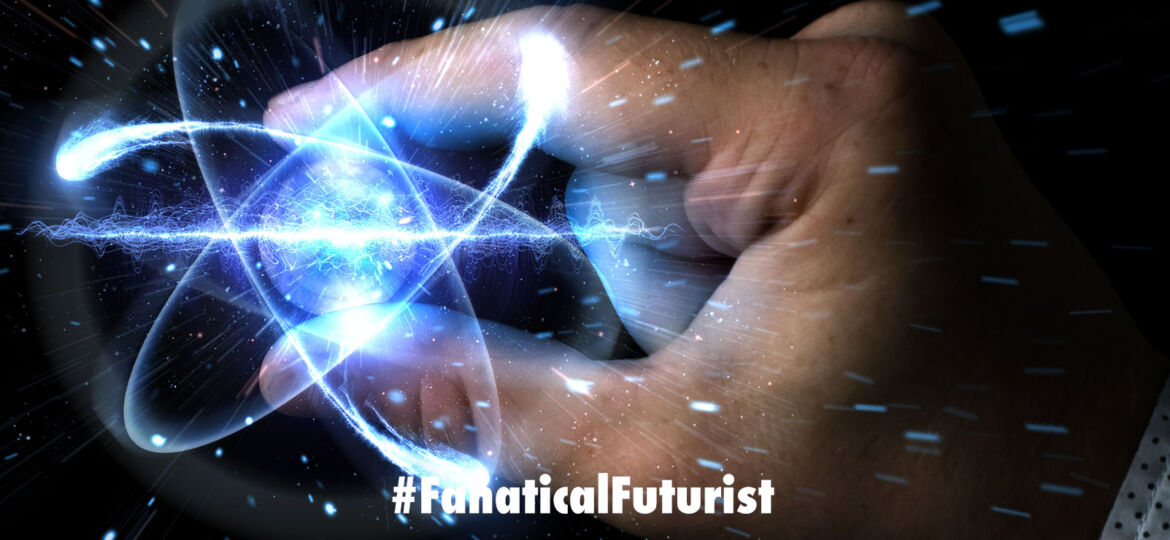
WHY THIS MATTERS IN BRIEF
Fusion energy is still a long way off, but the amount of power some prototypes are generating is staggering.
 Love the Exponential Future? Join our XPotential Community, future proof yourself with courses from XPotential University, connect, watch a keynote, or browse my blog.
Love the Exponential Future? Join our XPotential Community, future proof yourself with courses from XPotential University, connect, watch a keynote, or browse my blog.
Thermonuclear weapons may be dangerous, but they’re also a mystery. This is why physicists at the US Department of Energy’s primary laser facility broke their own world record earlier this month when they generated more than 10 quadrillion watts of fusion power, according to a recent post on the scientific journal Nature. While the energy only lasted for a fraction of a second it reached a scale equivalent to roughly 700 times the generating capacity of the entire US electrical grid.
The breakthrough helped raise spirits at the issue prone National Ignition Facility (NIF), which aims to produce more fusion energy than it requires to run, to achieve a sustained fusion reaction that they could use to simulate the effect of a real-world nuclear explosion.
The $3.5 Billion facility in the Lawrence Livermore National Laboratory was designed to investigate fusion reactions at the heart of thermonuclear weapons, not operate as a fully fledged fusion power plant. But, in the wake of a US ban on underground nuclear testing in 1992, the energy department suggested the NIF become part of an expansive Stockpile Stewardship Program, which tests the reliability of nuclear weapons without actually triggering a detonation. And with the latest laser-fusion breakthrough, scientists are beginning to believe the NIF might succeed at this purpose.
“That’s really the scientific question for us at the moment,” said the Deputy Director Mark Herrman of Livermore, in the Nature report. “Where can we go? How much further can we go?” The NIF failed to achieve its initial goal of reaching a fusion ignition by 2012, since which scientists have worked to customize the facility, and optimize targets in the fusion reaction chamber.
The new record was a result of several changes throughout the labyrinthine system, from laser precision, to improved target-fabrication techniques, to diagnostics. This comes on the heels of decades of efforts to build a comprehensive program that can study the nuclear arsenal of the United States via supercomputers at NIF, in addition to other research facilities. In that time, scientists have tested explosives and nuclear materials and components.
Of course, the NIF isn’t detonating bombs, but experiments there might enhance our scientific grasp of how weapons detonate, which could cut down uncertainties and perhaps the inherent collateral damage of such weapons. Further experiments might also investigate how the weapon fares against intense radiation bursts that might happen in a fully-fledged war environment. But, naturally, not everyone agrees.
Critics argue that the facility might be unnecessary to maintaining the US nuclear weapons stockpile, suggesting that the National Nuclear Security Administration (NNSA) is interested in developing new nuclear weapons instead of simply practicing maintenance on older ones at minimal cost.
“That shows either an enormous amount of hubris, or an incredible confidence that you can build a lot of what we need for the next 50 years, even without a functioning NIF,” argued the Head of the Nuclear Information Project Hans Kristensen of the Federation of American Scientists, in Washington, D.C. Hermann thinks the NIF can offer an alternative to the limited experimental data that weapons scientists have when evaluating computer simulations of detonations. A further test to replicate the NIF team’s success might happen later this month, but the sooner it happens, the better, because slight variations in the tuning of the lasers, or the manufacturing of the target capsule could lead to vastly different results.
















